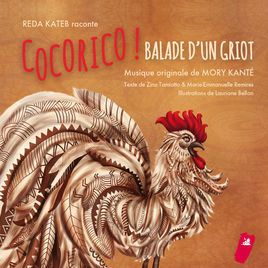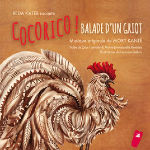- artist:MORY KANTE
- featured artist:Mory Kante
- release year:2017
- style(s):World Pop
- country:France
- formats:Audio File / Digital, CD (Compact Disc)
- record posted by:International Stage Productions, Inc.
- label:Harmonia Mundi
- publisher:harmonia mundi SAS
- buy this record
Links
Mory Kante
Centuries ago, West Africa was a land of kingdoms and empires. Their shifting frontiers were very different from the national borders we see today, which were created by Europeans in the 19th century. In 1235, a great king named Sunjata Keita rose to lead the Mande Empire, centered in what we now know as Mali, though at its height, this empire spread across much of West Africa. Sunjata was a visionary, a man who maintained peace over a vast realm, allowing peoples of many different ethnic and language backgrounds to travel, trade and prosper. One of the enduring legacies from that remarkable time is the Mande griot—a musician, story-teller, historian, counselor and negotiator. There is no European word that quite describes a griot. For Sunjata, griots were a powerful tool of governance. They ensured that people would remember their histories and respect their neighbors. To this day, in Mali, Guinea, Senegal, Gambia and elsewhere, people with the names Diabaté, Kouyaté, Sissoko and Kanté know that they descend from this distinguished heritage.
On one level, griots (or djelis, as they are called in the Bambara language) are entertainers. In the courts of old, they became master vocalists, percussionists and players of three important instruments: the 21-stringed kora harp, the wooden-slatted balafon, and the spike lute known as ngoni—an ancestor of the American banjo. These musicians were well taken care of and needed to do no other work, so their artistry developed generation by generation, resulting in complex, virtuoso music comparable to the finest classical music traditions of Europe.
At the same time, griots have always known that their highest purpose is to keep the living mindful of the achievements, and mistakes, of their ancestors. If you go to a wedding celebration in Guinea today, you are apt to see an ensemble of fine instrumentalists, perhaps playing guitars and keyboards in addition to the traditional instruments. A series of vocalists, often women, will take up the microphone, singing gloriously about each family in attendance, praising the great deeds of their ancestors going back to the time of Sunjata. Children who grow up in this culture are apt to know more about their histories than most children in the west know about theirs. History is literally delivered to them over and over within the words to some of the most beautiful music to be found anywhere.
Griot songs tell stories, and those stories teach life lessons. Sunjata Keita himself begins as the weak and sickly son of a spirit marriage between a hunter and buffalo-woman. Through much struggle, he rises to become the most powerful leader in Africa. Within the twists and turns of of Sunjata’s journey, we find examples of bravery, generosity, loyalty and faith—just some of the universal values carried in the songs and stories of the griots.
Mory Kanté was raised in this tradition in Guinea and Mali, the heart of the old Mande Empire. He learned the histories and legacies of his people, and also the demanding art of playing kora, and of singing with the strength and perfection required of a griot. But Mory has gone further, turning his ancestral art into dynamic and contemporary popular music. In 1988, Mory’s hit version “Yéké Yéké” became the first African song to sell over one-million copies. And he has never stopped in his lifelong quest to bring the glory of African art, wisdom and history to the widest possible audience. From the time of Sunjata up to the age of YouTube and Facebook, this, quite simply, is what a great griot does. And Mory Kanté is one of the greatest griots alive today.



